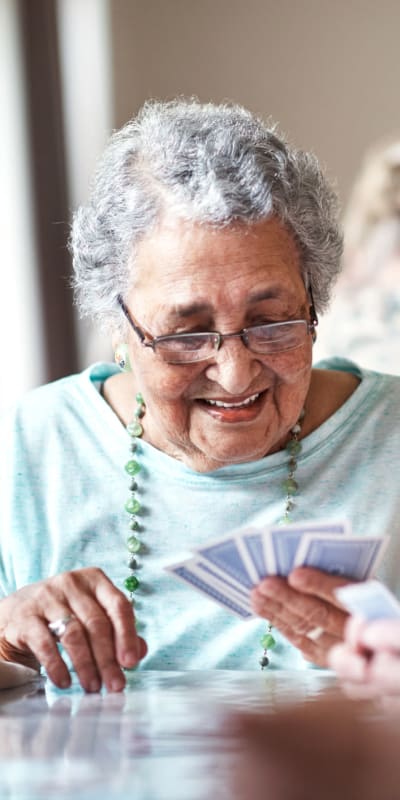Thank a special person in your life, honor or remember a loved one, and celebrate an anniversary, birthday, or a special event by gifting a donation to Vista Prairie’s Tribute Program.
We are Vista Prairie Communities
As a mission-driven, nonprofit organization, we are dedicated to serving seniors who entrust us with their lives, health, and well-being. The highly trained team members at Vista Prairie Communities make it possible for you or your loved ones to imagine a worry-less lifestyle, including 24/7 care, a warm community environment, and a friendly atmosphere with plenty of social opportunities for companionship. Our compassionate caregivers and safe community settings help residents feel comfortable, making it easier for them to make new friends, feel a sense of belonging, and find their purpose. At Vista Prairie Communities, we offer personalized care plans, maintenance-free living, independence, and supportive services that include Assisted Living, Memory Care, Care Suites, and Respite Care. Our signature Aspire - Life on Purpose™ lifestyle and innovative technologies are just a couple of the programs that set us apart from other senior care communities.
Whether you’re searching for your next home at one of our communities, making a charitable contribution to one of our programs, or looking to expand your career, we welcome you at Vista Prairie Communities.

![]()
Caring
Kindness, compassion, and concern for the well-being of people throughout life’s journey.

![]()
Respect
Honoring the dignity and unique needs of all people.

![]()
Collaboration
Achieving common goals through teamwork and partnerships.

![]()
Innovation
Finding new and better ways to fulfill our mission in an ever-changing environment.

![]()
Stewardship
We are mindful of our responsibility to wisely use the talent, knowledge, and financial resources that have been entrusted to us as we fulfill our mission.
Make a Difference
Being compassionate, generous, and sharing what you can are principles that make life special. Our goal as a nonprofit organization is to raise funds for residents in need, employees in need, and for special community needs. We encourage you to make a tax-exempt donation to one of our life-changing programs or communities today. To get started, use our secure online donation form or contact the executive director at your chosen Vista Prairie community to help identify ways where you can support us.
Vista Prairie’s Life Enriching Programs keep minds sharper, bodies healthier, and lives fuller. Your donation enhances opportunities for our residents to stay engaged and inspired on a daily basis.
Donate toward our capital investments to assist us with improving, enhancing, and expanding our communities and services. We’re dedicated to providing the highest standard of care in the safest environments, and your donation helps us honor this commitment.
Proudly Celebrating 25 Years

1997
Year Established

10
Vista Prairie Communities

865
Residents

500+
Team Members

Assisted Living
Support and services to help keep you independent.

Memory Care
Person-centered care to meet you on your journey.

Care Suites
Complex care in a quaint, home-like setting.

Respite Care
Support for the senior and caregiver with short-term care.
Our Services
Through kindness, compassion, and consideration for the well-being of our residents, we provide a variety of service options personalized to your or your loved one’s needs. We transform lives by providing supportive care and enriching environments in our communities through Assisted Living, Memory Care, Care Suites, and Respite Care services, as well as our innovative programs such as our signature Aspire - Life on Purpose™ lifestyle. We look forward to helping you or your loved one find the right care at the right time. Get in touch with us today – life looks great from here.
Aspire - Life on Purpose™ lifestyle
Vista Prairie Communities’ Aspire - Life on Purpose™ lifestyle embodies our commitment to honor residents and enhance their quality of life in five critical areas throughout their special time with us.
We provide social support regularly to ensure that you’ll have people to turn to in times of need or crisis. We help our residents find a connection to purpose, family, and community.
Working as a team with other healthcare professionals and you, we help to develop an individually designed physical wellness plan for better overall well-being and nutrition.
With our innovative programming, we keep your mind engaged with lifelong learning courses such as painting, music, languages, technology, and other new discoveries.
We help you pursue a better understanding of your feelings as well as helping you acknowledge and express them in a healthy and productive manner. Our support can help you accept limitations, deal with the stressors of daily life, and achieve emotional stability.
The road to spiritual well-being aligns your actions with your beliefs and values. We celebrate the many ways you contemplate, express, and experience your beliefs.






Your Career’s Potential
From the moment you meet the team and see the environment at a Vista Prairie community, you’ll know you’ve found the right place to expand your potential. The compassionate care, joyful environments, and positive relationships at each of our communities truly make an impact on our residents and everyone around them. At Vista Prairie, you’re so much more than an employee, you’re family. We’re dedicated to giving back to our team members, including employee funds, wonderful benefits, opportunities for internal promotion, holiday time, and paid time off. You’ll love everything about our employee culture. This is where you can build your career, share your passions, find your belonging, and unlock your purpose. Join the Vista Prairie team and feel fulfilled in your career.
Our Communities
Experience joy-filled living and an enhanced quality of life at a Vista Prairie community today. We provide nurturing, comfortable, and supportive homes for our residents. Warm and inviting environments, unique amenities, and outstanding care are what make our communities so special. At Vista Prairie Communities, you’re family. Search for a home near you in Minnesota, Wisconsin, or Iowa.
Join Our Family Today
